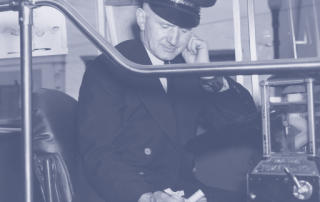Transit and Contracts: What’s Best for Drivers?
Songju Kim and Martin Wachs
Throughout its history, most public transit has been provided by private companies. During the second half of the twentieth century, however, things changed. Transit came gradually into public ownership as revenues from fares no longer covered costs and operators faced bankruptcy. Local, state, and federal subsidies kept transit afloat in most metropolitan areas. In reaction to steadily increasing subsidies and rising operating costs, many said transit services should be contracted out to private operators. Margaret Thatcher had made great strides toward privatizing transit in Britain, and there were calls for adopting similar strategies in the US. Proponents argued that private operation would be more efficient and less costly, while opponents said that private operators would save money simply by paying workers less than public operators and providing inferior benefits. Actual data were hard to come by, and both sides used dueling studies to prove opposite conclusions based on competing ideological commitments rather than actual data. It is still not completely clear whether privately operated transit service is more efficient than publicly run services.

